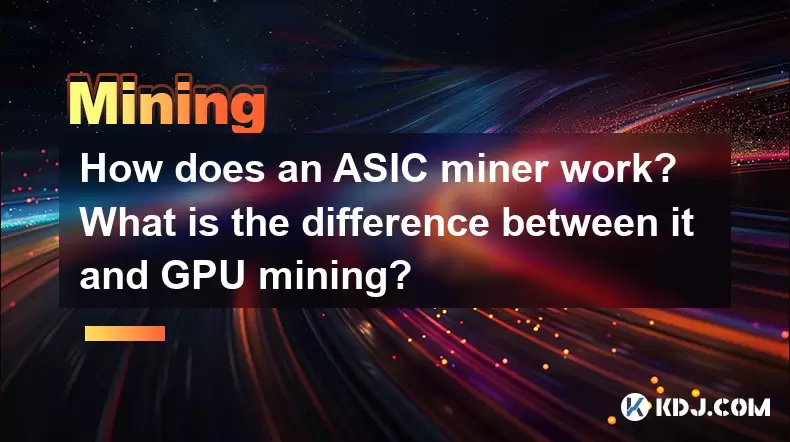-
 Bitcoin
Bitcoin $115200
-2.68% -
 Ethereum
Ethereum $3601
-5.16% -
 XRP
XRP $3.035
-2.96% -
 Tether USDt
Tether USDt $0.9997
-0.04% -
 BNB
BNB $764.5
-5.43% -
 Solana
Solana $168.1
-5.92% -
 USDC
USDC $0.9998
-0.02% -
 Dogecoin
Dogecoin $0.2090
-4.80% -
 TRON
TRON $0.3272
-0.49% -
 Cardano
Cardano $0.7306
-5.00% -
 Hyperliquid
Hyperliquid $39.16
-12.22% -
 Stellar
Stellar $0.3967
-4.96% -
 Sui
Sui $3.566
-5.95% -
 Chainlink
Chainlink $16.55
-6.57% -
 Bitcoin Cash
Bitcoin Cash $552.3
-3.90% -
 Hedera
Hedera $0.2516
-4.69% -
 Avalanche
Avalanche $21.99
-5.75% -
 Toncoin
Toncoin $3.621
-0.28% -
 Ethena USDe
Ethena USDe $1.000
-0.03% -
 UNUS SED LEO
UNUS SED LEO $8.951
0.02% -
 Litecoin
Litecoin $105.9
-3.59% -
 Shiba Inu
Shiba Inu $0.00001232
-5.00% -
 Polkadot
Polkadot $3.640
-5.55% -
 Uniswap
Uniswap $9.048
-7.03% -
 Monero
Monero $301.8
-1.51% -
 Dai
Dai $0.9999
-0.01% -
 Bitget Token
Bitget Token $4.334
-3.66% -
 Pepe
Pepe $0.00001064
-6.17% -
 Cronos
Cronos $0.1367
-5.78% -
 Aave
Aave $259.2
-4.59%
How does an ASIC miner work? What is the difference between it and GPU mining?
ASIC miners efficiently mine Bitcoin using specialized chips for SHA-256 hashing, while GPUs offer versatility but lower efficiency for the same task.
May 14, 2025 at 09:43 pm

An ASIC miner, or Application-Specific Integrated Circuit miner, is a specialized hardware designed solely for the purpose of mining cryptocurrencies. ASIC miners are built to perform the specific task of solving the cryptographic puzzles required to mine cryptocurrencies like Bitcoin, making them highly efficient for this particular task. The core of an ASIC miner consists of numerous small chips, each dedicated to performing the SHA-256 hashing algorithm used in Bitcoin mining. These chips are interconnected on a circuit board and work together to maximize the hashing power of the miner.
The process of how an ASIC miner works begins with the miner connecting to a mining pool or directly to the blockchain network. Once connected, the miner receives a block of transaction data to process. The ASIC then uses its chips to perform billions of hash calculations per second, attempting to find a hash that meets the network's difficulty criteria. When a valid hash is found, the miner submits it to the network, and if accepted, the miner is rewarded with newly minted cryptocurrency and transaction fees. This process repeats continuously, with the miner constantly working to solve new blocks of transactions.
In contrast, GPU mining involves using the graphical processing units (GPUs) found in computers, which are originally designed for rendering graphics but can also be used for mining cryptocurrencies. GPU mining is more versatile than ASIC mining, as GPUs can be used for a variety of tasks beyond mining, including gaming and professional graphics work. However, GPUs are less efficient at mining specific cryptocurrencies like Bitcoin, as they are not optimized for the SHA-256 algorithm in the same way ASICs are.
The key differences between ASIC and GPU mining lie in their efficiency, cost, and versatility. ASIC miners are far more efficient at mining specific cryptocurrencies, such as Bitcoin, due to their specialized hardware. This efficiency translates to higher hash rates and, consequently, higher potential earnings per unit of electricity consumed. However, ASIC miners are also more expensive to purchase and are essentially useless for any task other than mining the specific cryptocurrency they were designed for.
On the other hand, GPU mining offers greater flexibility, as GPUs can be used for a wider range of cryptocurrencies and other computing tasks. GPUs are generally less expensive than ASICs, making them more accessible to a broader audience. However, their lower efficiency means they consume more electricity per hash, resulting in higher operational costs and lower potential earnings compared to ASICs for the same cryptocurrency.
ASIC Miner Components
An ASIC miner is composed of several key components that work together to maximize its mining efficiency. The heart of an ASIC miner is its hashing chips, which are custom-designed to perform the specific cryptographic calculations required for mining. These chips are typically manufactured using advanced semiconductor processes to achieve high performance and energy efficiency.
The hashing chips are mounted on a printed circuit board (PCB), which serves as the backbone of the miner. The PCB connects the chips to the power supply and other components, ensuring that they operate in harmony. A cooling system is also crucial, as the intense computational work generates significant heat. Most ASIC miners use fans or liquid cooling systems to dissipate this heat and maintain optimal operating temperatures.
The power supply unit (PSU) is another critical component, providing the necessary electrical power to the miner. ASIC miners often require high-wattage PSUs to handle their power demands, and the efficiency of the PSU can impact the overall cost-effectiveness of the mining operation. Additionally, a control board manages the miner's operations, communicating with the mining pool or blockchain network and coordinating the activities of the hashing chips.
GPU Mining Setup
Setting up a GPU mining rig involves several steps to ensure optimal performance and efficiency. First, select a suitable GPU that supports the cryptocurrency you wish to mine. Popular choices include NVIDIA and AMD GPUs, which are known for their mining capabilities. Next, choose a mining software compatible with your GPU and the cryptocurrency you are targeting. Common mining software includes CGMiner, EasyMiner, and NiceHash.
Assemble the mining rig by connecting the GPU to a motherboard, CPU, and sufficient RAM. A dedicated mining motherboard is recommended, as it can support multiple GPUs and is designed to handle the high temperatures and power requirements of mining. Install the mining software on your system and configure it according to the software's instructions. This typically involves entering your mining pool details and setting up the software to start mining automatically.
Ensure proper cooling for your GPUs, as mining can generate significant heat. Use high-quality fans or liquid cooling systems to maintain optimal temperatures and prevent hardware damage. Finally, connect your mining rig to a stable power supply and monitor its performance. Regular maintenance and updates to the mining software can help ensure that your rig continues to operate efficiently.
Efficiency and Cost Comparison
When comparing the efficiency and cost of ASIC and GPU mining, ASIC miners generally offer superior performance for mining specific cryptocurrencies like Bitcoin. Their specialized hardware allows them to achieve higher hash rates with lower energy consumption, making them more cost-effective for large-scale mining operations. However, the initial cost of purchasing an ASIC miner can be significant, ranging from a few hundred to several thousand dollars, depending on the model and its performance.
GPU mining, on the other hand, is more accessible due to the lower cost of GPUs. A single GPU can be purchased for a few hundred dollars, and multiple GPUs can be added to a mining rig to increase its hashing power. However, GPUs are less efficient at mining cryptocurrencies like Bitcoin, resulting in higher electricity costs per hash. This can make GPU mining less profitable, especially in regions with high electricity rates.
The choice between ASIC and GPU mining depends on several factors, including the cryptocurrency being mined, the miner's budget, and their long-term goals. For those focused on mining Bitcoin and other SHA-256-based cryptocurrencies, ASIC miners are the preferred choice due to their superior efficiency. For miners interested in a wider range of cryptocurrencies or those who value versatility, GPU mining may be more suitable.
Mining Pool Considerations
Both ASIC and GPU miners often join mining pools to increase their chances of earning rewards. A mining pool is a group of miners who combine their computational resources to solve cryptographic puzzles more efficiently. When a pool successfully mines a block, the rewards are distributed among the members based on their contributed hashing power.
When choosing a mining pool, consider factors such as the pool's fees, payout structure, and reliability. Some pools charge a percentage of the rewards as a fee, while others may have a fixed fee structure. The payout structure can vary, with some pools offering payouts based on the number of shares contributed, while others may use a proportional or PPS (Pay Per Share) system.
Joining a reputable and well-established mining pool can provide more consistent earnings and reduce the risk of downtime or payment issues. Research different pools and read reviews from other miners to find the best fit for your mining operation. Once you have selected a pool, configure your ASIC or GPU miner to connect to the pool's server and start mining.
Frequently Asked Questions
Q: Can I use an ASIC miner for cryptocurrencies other than Bitcoin?
A: Most ASIC miners are designed specifically for mining Bitcoin and other cryptocurrencies that use the SHA-256 algorithm. While some ASICs can be used for other algorithms, they are generally less efficient and may not be cost-effective for mining other cryptocurrencies.
Q: How do I know if GPU mining is profitable for me?
A: To determine the profitability of GPU mining, consider factors such as the cost of your GPUs, electricity rates, the cryptocurrency's current price, and the mining difficulty. Use online mining calculators to estimate your potential earnings and compare them to your operational costs.
Q: What are the maintenance requirements for ASIC and GPU miners?
A: Both ASIC and GPU miners require regular maintenance to ensure optimal performance. This includes cleaning the hardware to prevent dust buildup, monitoring temperatures, and updating the mining software. ASIC miners may also need occasional firmware updates from the manufacturer.
Q: Can I switch between ASIC and GPU mining if I change my mining strategy?
A: While it is possible to switch between ASIC and GPU mining, it involves significant changes to your mining setup. ASIC miners are not versatile and cannot be repurposed for other tasks, whereas GPUs can be used for a variety of computing tasks beyond mining. Consider your long-term goals and the flexibility you need before investing in either type of hardware.
Disclaimer:info@kdj.com
The information provided is not trading advice. kdj.com does not assume any responsibility for any investments made based on the information provided in this article. Cryptocurrencies are highly volatile and it is highly recommended that you invest with caution after thorough research!
If you believe that the content used on this website infringes your copyright, please contact us immediately (info@kdj.com) and we will delete it promptly.
- Dogecoin's Price Support Under Fire: Can It Fend Off Competitors?
- 2025-08-02 04:30:12
- AI Cloud Mining: How AIXA Miners is Empowering Young Investors
- 2025-08-02 04:30:12
- Crypto Spotlight: Rollblock's Rise, Ripple's Resistance, and What It Means for Your Portfolio
- 2025-08-02 04:50:12
- Crypto's Golden Age: Tether Gold, Institutional BTC, and the Future of Finance
- 2025-08-02 04:50:12
- VeChain, Unilabs, XRP: Decoding August's Crypto Moves
- 2025-08-02 04:55:43
- Bitcoin, Whales, and Profit: Decoding Crypto's Latest Moves
- 2025-08-02 04:55:43
Related knowledge

What was the highest APY for IRON mining?
Jul 23,2025 at 05:14am
Understanding IRON Token and Its Mining MechanismThe IRON token is a stablecoin that operates within the Iron Finance ecosystem, primarily on blockcha...

What is impermanent loss in IRON pools?
Jul 23,2025 at 09:00am
Understanding Impermanent Loss in the Context of IRON PoolsImpermanent loss is a phenomenon that affects liquidity providers in decentralized finance ...

How to claim rewards from IRON mining?
Jul 23,2025 at 02:21pm
Understanding IRON Mining and Reward MechanismsIRON Finance operated as a decentralized finance (DeFi) protocol on the Polygon and Binance Smart Chain...

How to claim rewards from IRON mining?
Jul 29,2025 at 05:07am
Understanding IRON Mining and Reward MechanismIRON is a dual-token system designed to stabilize the value of a synthetic asset through a combination o...

IRON mining tutorial for beginners
Jul 27,2025 at 12:01am
What Is IRON and How Does It Work in the Cryptocurrency Ecosystem?IRON is a cryptocurrency token that operates on the Binance Smart Chain (BSC) and is...

How to calculate APY for IRON mining?
Jul 28,2025 at 09:49am
Understanding APY in the Context of IRON Token MiningWhen engaging in IRON token mining within decentralized finance (DeFi) platforms, Annual Percenta...

What was the highest APY for IRON mining?
Jul 23,2025 at 05:14am
Understanding IRON Token and Its Mining MechanismThe IRON token is a stablecoin that operates within the Iron Finance ecosystem, primarily on blockcha...

What is impermanent loss in IRON pools?
Jul 23,2025 at 09:00am
Understanding Impermanent Loss in the Context of IRON PoolsImpermanent loss is a phenomenon that affects liquidity providers in decentralized finance ...

How to claim rewards from IRON mining?
Jul 23,2025 at 02:21pm
Understanding IRON Mining and Reward MechanismsIRON Finance operated as a decentralized finance (DeFi) protocol on the Polygon and Binance Smart Chain...

How to claim rewards from IRON mining?
Jul 29,2025 at 05:07am
Understanding IRON Mining and Reward MechanismIRON is a dual-token system designed to stabilize the value of a synthetic asset through a combination o...

IRON mining tutorial for beginners
Jul 27,2025 at 12:01am
What Is IRON and How Does It Work in the Cryptocurrency Ecosystem?IRON is a cryptocurrency token that operates on the Binance Smart Chain (BSC) and is...

How to calculate APY for IRON mining?
Jul 28,2025 at 09:49am
Understanding APY in the Context of IRON Token MiningWhen engaging in IRON token mining within decentralized finance (DeFi) platforms, Annual Percenta...
See all articles

























































































